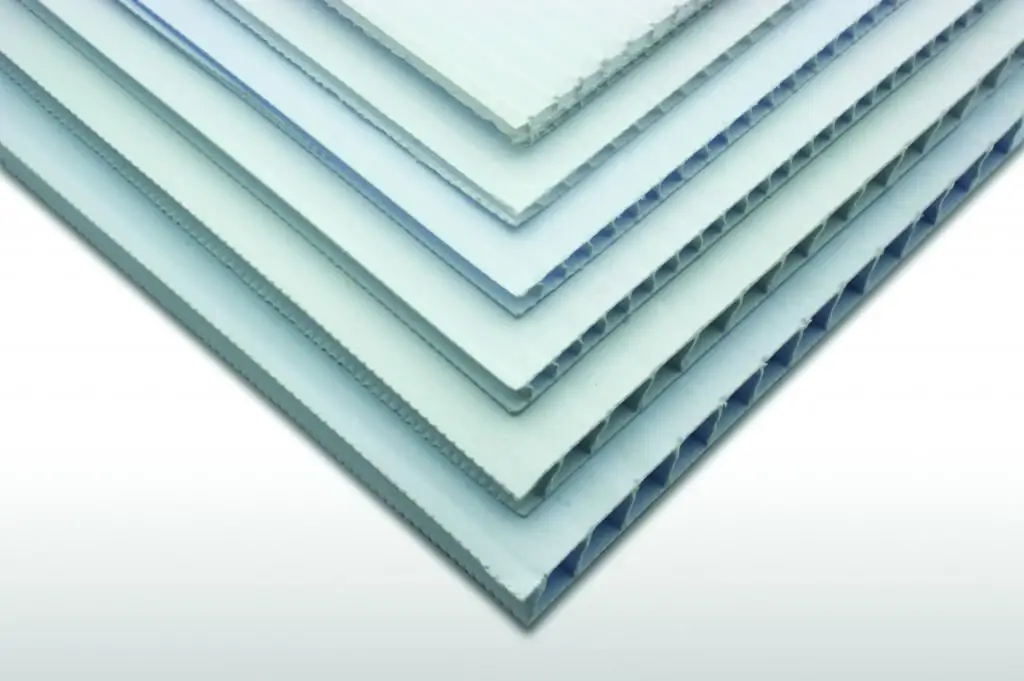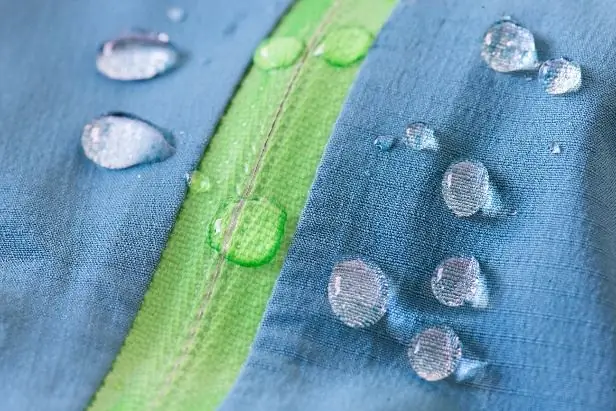2025 Author: Howard Calhoun | [email protected]. Last modified: 2025-06-01 07:12:56
The current level of development of radio engineering devices and their widespread use put the issues of electromagnetic protection and safety on the agenda. Until recently, this layer of problems remained in the shadows, since the technological level did not allow them to be considered in detail. But today there is a whole direction for the development of radar absorbing materials (RPM), which have a variety of purposes.
Scope of RPM

The need to use this kind of materials arises in the military-defense complex, in the civilian industry, in solving typical problems in the development of radio-electronic devices, etc. But protective systems and security tools are still the most relevant in terms of request on RPM. Moreover, this is not necessarily a military-technical complex. Modern radar absorbersmaterials are successfully mastered in the niche of computer systems that process information with the connection of means of protection against unauthorized access. Objects of biological origin are thus protected from electromagnetic effects, and reducing radar vulnerability is a necessity for a wide range of civilian and military units. Another thing is that the nature of use and the properties of specific RPMs in each case may differ markedly.
What is RPM?

This class of materials can be defined through the ability of the composition and structure of the product to ensure the absorption of electromagnetic energy in a particular frequency range. New generations of RPMs are more amenable to modification in terms of their ability to convert absorbed waves into certain types of energy. In this process, in addition to absorption, phenomena such as interference, scattering, and diffraction are also observed. As for the production of radio absorbing materials, they are based on particles of a ferromagnet. They are used as wide-range absorbing materials, forming an insulating layer on the surface of the target product with respect to electromagnetic waves. In this case, the prerequisite for the structural basis of the insulator must be the presence of a non-magnetic dielectric. On this basis, various modifications of the RPM are being developed. For example, in addition to the structure of ferromagnets, elements of soot or graphite can be included, which act asabsorbers. In the production of narrow range RPMs, the emphasis is also on the use of rubber or plastics.
The difference between radar absorbing materials and coatings

There is no strict distinction, in terms of performance, between materials and coatings for this purpose, but the very mechanics of manufacturing and further handling makes it necessary to distinguish between these means of isolation. In particular, if materials can be included in the structural and even elemental base of the target product, then the coatings act only as an auxiliary layer on the surface, without performing any tasks of a different nature. In part, there are also differences in absorbing abilities, but this factor is rather conditional. Depending on the structure, the radar absorbing material may show some success as a microwave absorber device, but in any case, this ability will be characteristic only for a limited range. For example, today there are radiation spectra of radar stations that, in principle, are not available for “processing” of RPM.
Technical and operational characteristics of RPM

Materials are quite diverse in their design and structure, and yet there are average performance indicators for the most established groups of RPMs. The basic characteristics that reflect these values include:
- The length of the working waves - from 0.3 to 25 cm.
- The operating frequency spectrum is from 300 to 37,500 MHz.
- Magnetic permeability - from 1, 26 to 10-6 H/m.
- Operating temperature range - from -40 to 60 °С.
- Weight - about 200-300 g per 1 sq.m.
It should be taken into account that not every material can maintain the above performance characteristics in harsh external conditions of use. In this sense, we can single out the carpet-type Ternovnik radio-absorbing material, which is widely used by Russian enterprises in various industries. For him, there are practically no restrictions on operation in harsh climatic conditions. In addition, this material is resistant to mechanical abrasion and retains the ability to insulate objects regardless of their shape and area.
Varieties of RPM

Although there is currently no clear distinction in the RPM segment, the following categories of this material can be conditionally distinguished:
- Resonant. Also called frequency-tuned - they are able to provide complete or partial neutralization of the absorbed wave. Efficiency is directly determined by the thickness of the protective product.
- Non-resonant magnetic. They have ferrite in their structure, the particles of which are distributed in the epoxy layer. The magnetic radar absorbing material is able to dissipate the radiated energy over a large area, which makes it possible to achieve neutralization over a wide frequency range.
- Non-resonant volume. As a rule, they are thick layers of insulators that absorb the bulk of the inputradiation before it reflects off the back metal plate.
Features of RPM on ferromagnetic powders
A kind of coating with radio absorbing ability, which contains dispersed microspheres with particles of ferrite or carbonyl iron. In the process of absorption of high-frequency radiation in the powder, molecular vibrations occur, which provoke the release of heat. The same derived energy that is dissipated or transferred to an adjacent storage structure. A similar principle of operation is noted in sheets of neoprene rubber. This material works on the principle of magnetic losses, but contains in its structure a more solid filler of ferrite and graphite.
Foam RPM

A special group of RPMs that are used for long-term masking of important objects. This type of material is based on polyurethane foam. Its use is justified by the fact that the final product receives small dimensions and a modest mass with a fairly wide range of absorbing activity up to the decimeter spectrum. Although the raw materials are more expensive in this case, radar-absorbing materials and polyurethane-based masking foam coatings have significant performance advantages:
- High strength characteristics compared to similar water-polymer materials.
- Maintain cloaking qualities indefinitely.
- Less storage requirements for components.
- Foam masking coversin principle, they are characterized by high adhesion, which expands the possibilities of their application to a wide variety of surfaces.
Domestic RPM developments
Russian specialists are working in several areas of RPM creation, but materials based on nanostructures should be referred to the most promising areas. This concept, in particular, is being mastered by the Ferrit-Domen Research Institute, which has developed a whole line of thin radio-absorbing films made of hydrogenated carbon with nanoelements. The advantages of Russian-made radio-absorbing materials based on nanostructured particles include an increased absorbing capacity operating in the ultra-wide frequency spectrum of 7-300 GHz. Also, along with heat resistance and mechanical strength, developers note the environmental friendliness and waste-free technology for manufacturing such materials.
Conclusion

Despite the expansion of the general RPM segment, it is still too early to talk about established and standardized development standards for this class of materials. This is largely due to the secrecy in which researchers in this field have to work, but there are also problems associated with the technological complexity of development. Obtaining new promising radio-absorbing materials today is impossible without the use of innovative raw materials. Technologists are also actively working on more accurate and efficient methods of absorption capacity estimation, which enhances the ability to identify new RPMs. And against this backgroundlogically, radio absorbing agents based on the same ferrites, which have already become traditional, are losing their relevance.
Recommended:
Latex glue: description, composition, characteristics, application

Today, many different compounds are used in order to glue different surfaces, materials, etc. One of the fairly common compounds is latex glue. The main advantage is that, depending on the changes in the composition, the scope also changes
Gaseous fuel: description, characteristics, production methods, application

Gas fuel has been known since the middle of the 19th century. It was then that the famous engineer Lenoir built his first gas internal combustion engine. This apparatus was primitive and worked without pre-compression of the combustion chamber. Modern engines are no match for it. Today, the use of gaseous fuels is not limited to cars. This environmentally friendly, cheap and affordable type of fuel is actively conquering more and more new niches
Polypropylene - what is it? Definition, technical characteristics of the material, application in industry and everyday life

You can build a heating system with your own hands from polypropylene. The material is affordable and lightweight. Before starting work, it is necessary to designate the connection points and understand the installation method. For soldering pipes, products must be cut to size. The joints must be even and have a right angle. Sections are degreased, chips are removed from the surface after cutting
Pros and cons of polyester: material description, application benefits, reviews

Polyester can be found in the composition of almost any item that is present in the wardrobe of every person. Not only clothes are made from it, but also shoes, blankets, thermal underwear, carpets. What are the features of each type of polyester product. The pros and cons of these products are discussed in our article
Modern durable and high quality material G10: description, properties and application

People have been using knives as household tools for a very long time. With the passage of time and the improvement of technology, more and more new substances were used to create this tool. To date, the G10 material has become a new word in the creation of these things

